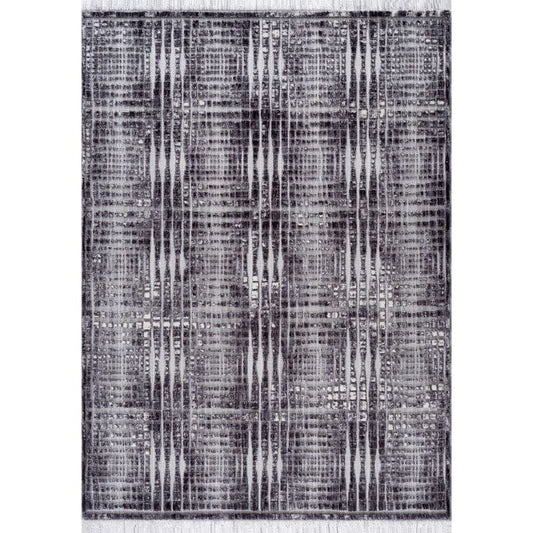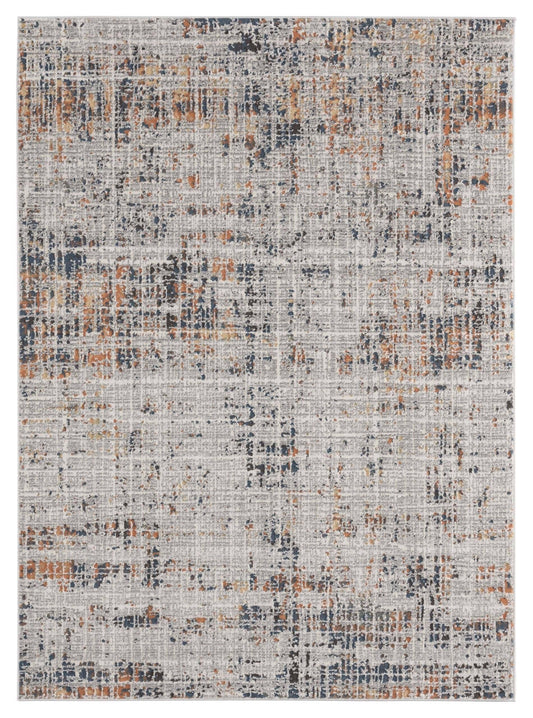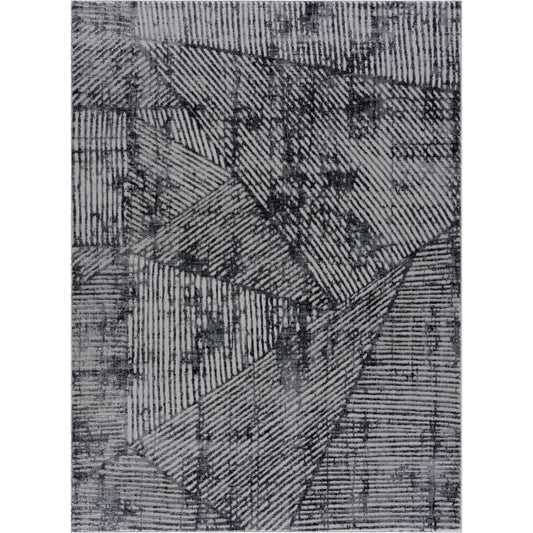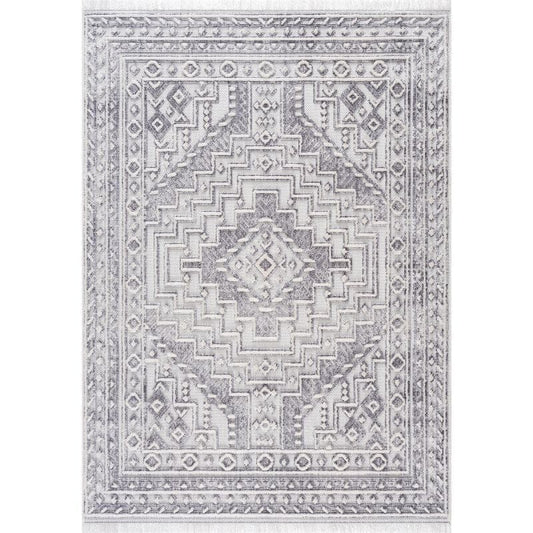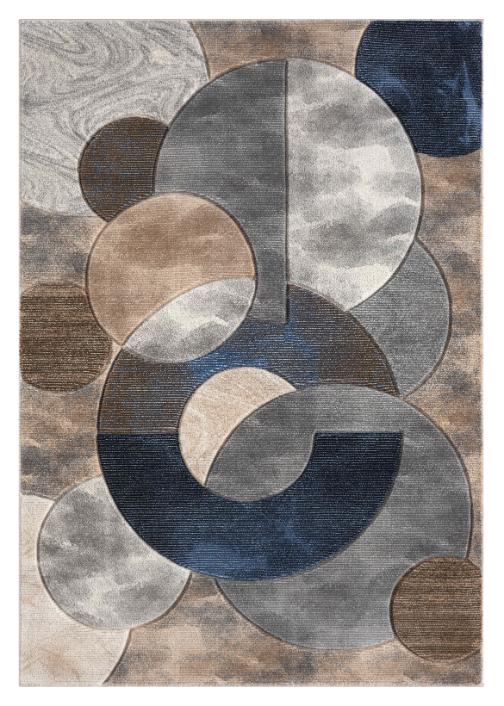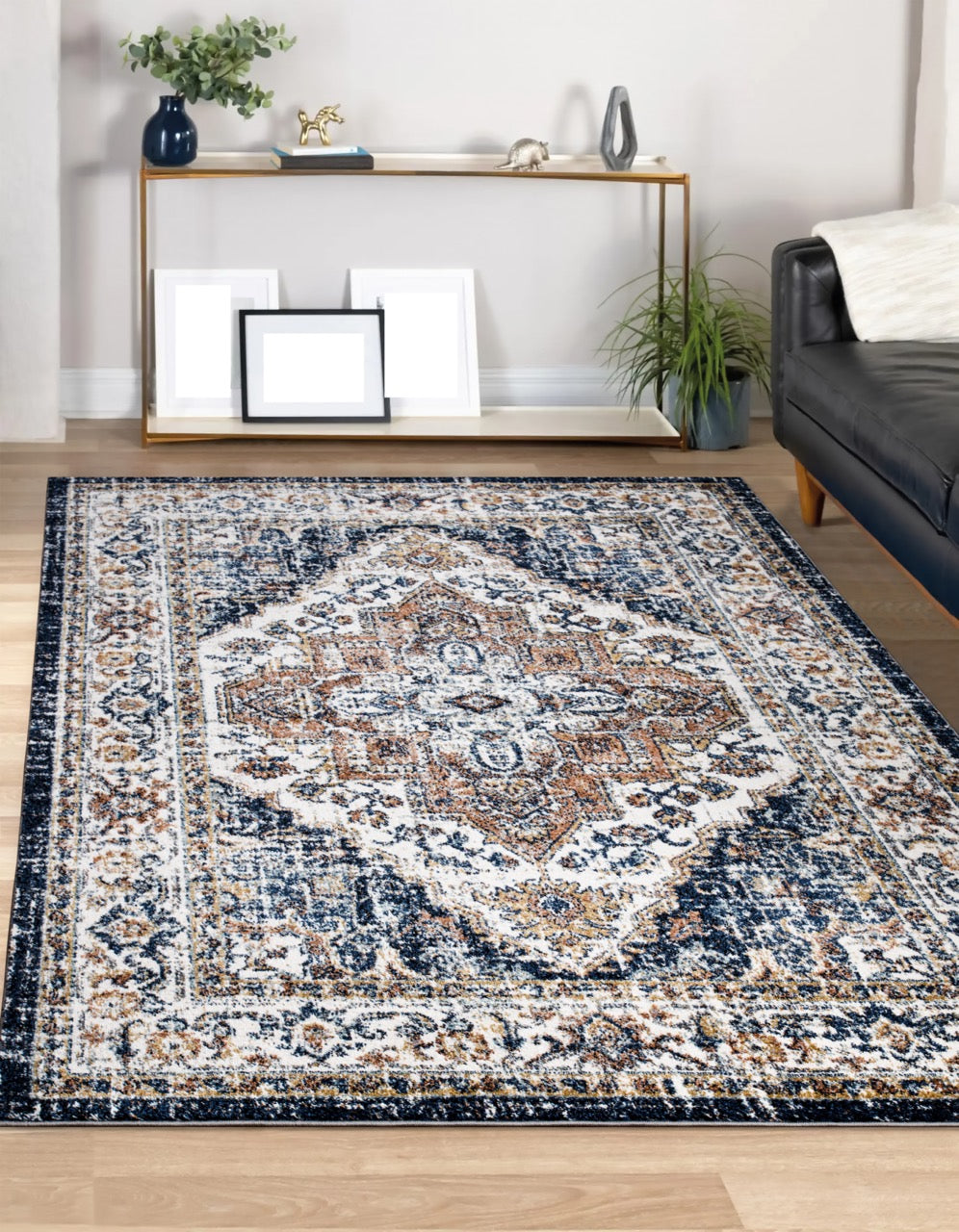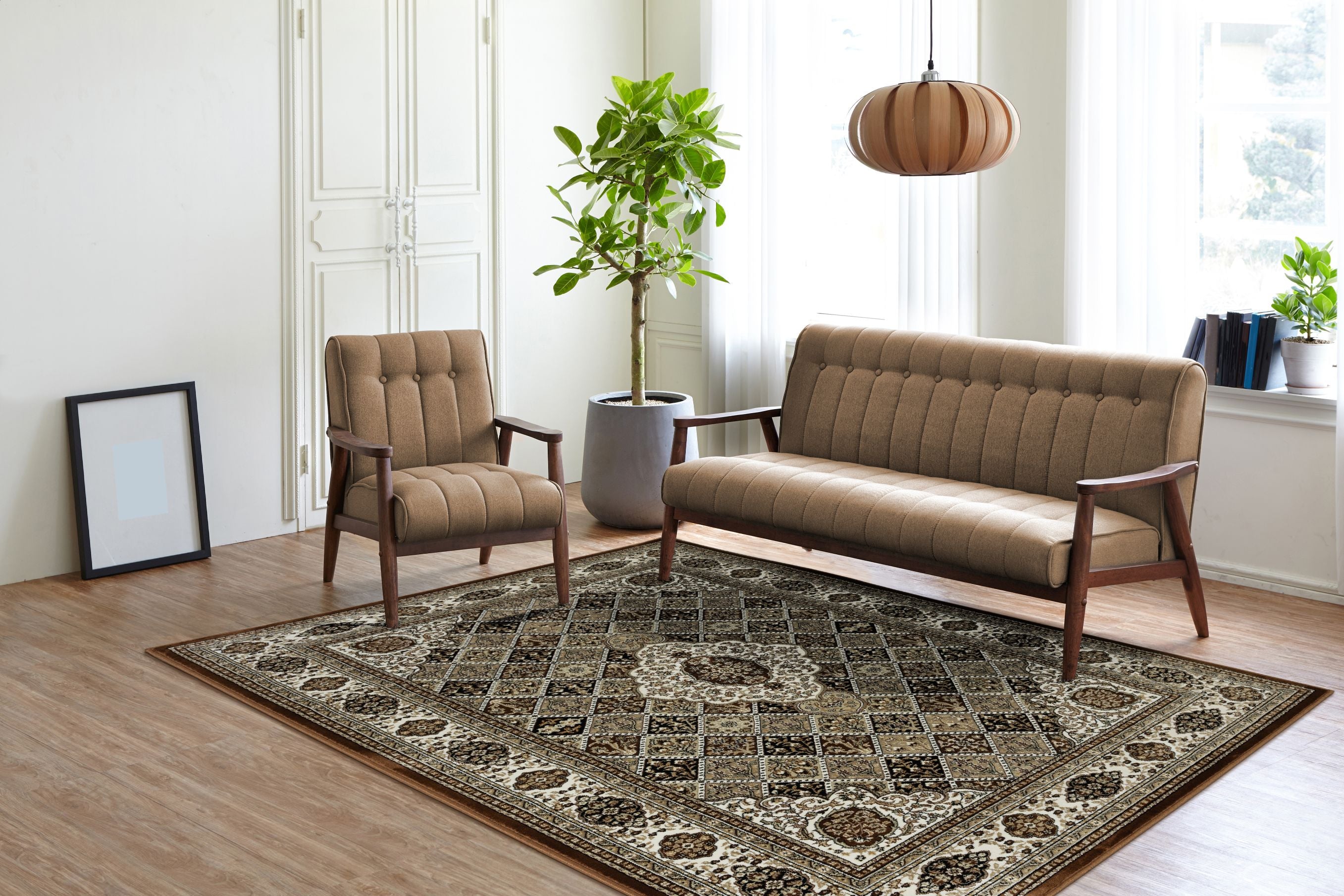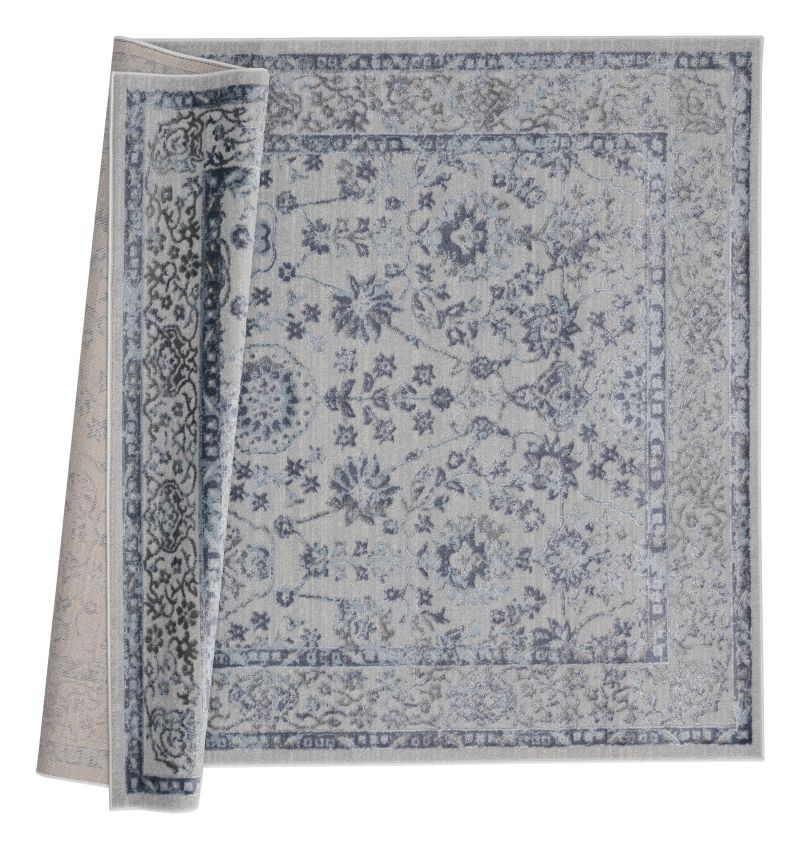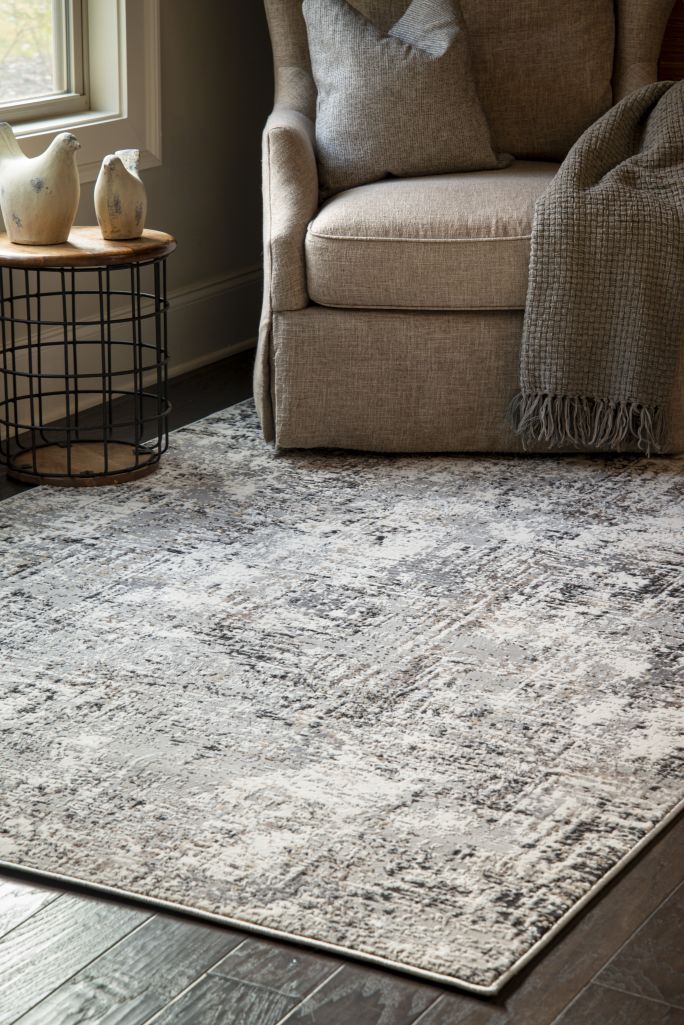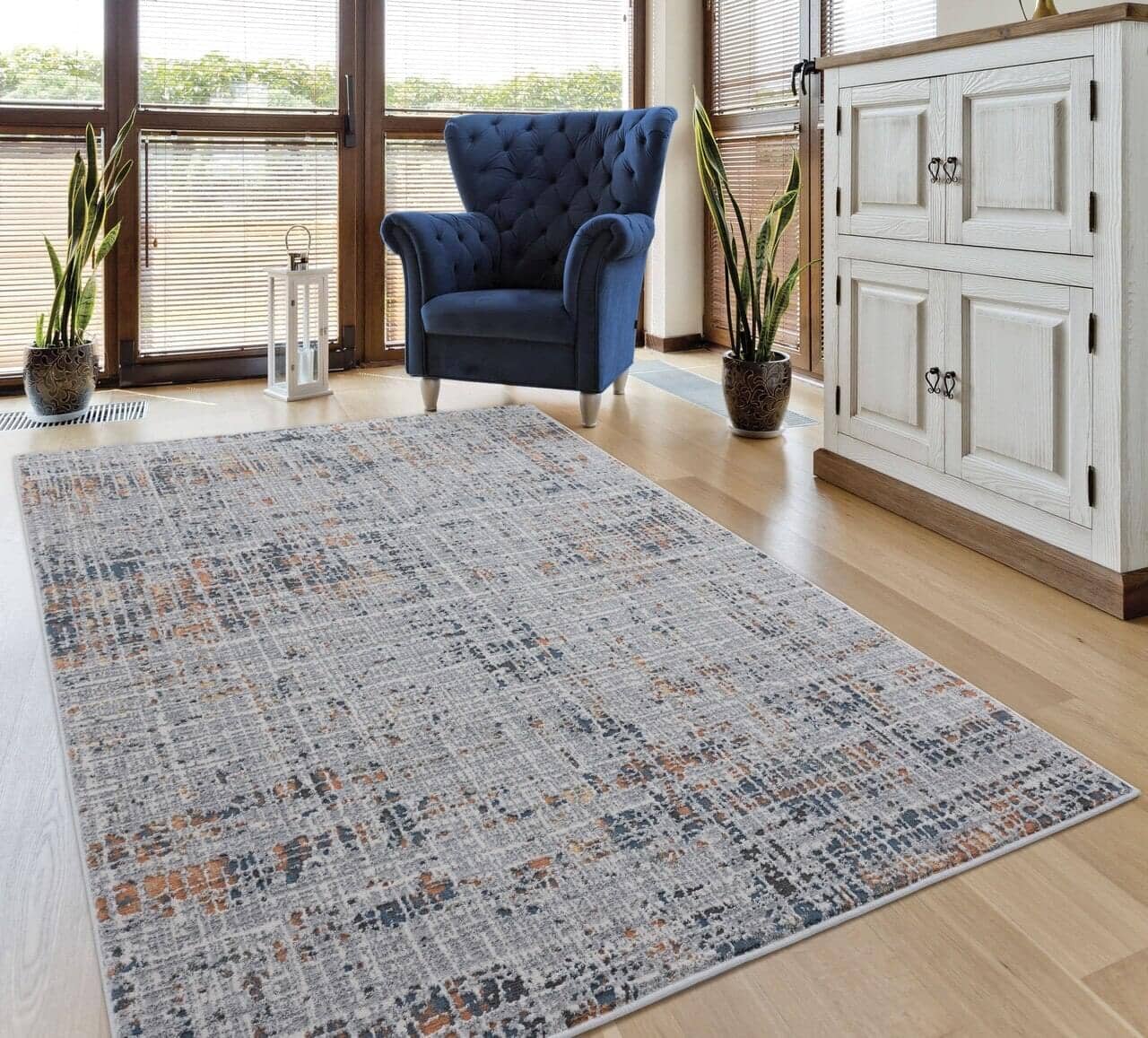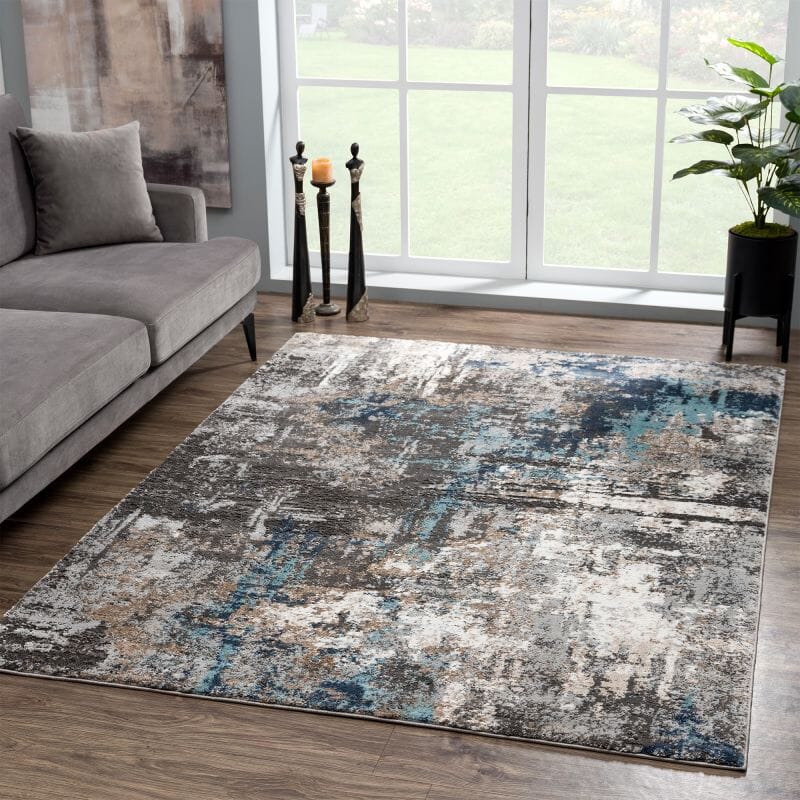Are you searching for the perfect rug material that combines durability, comfort, and aesthetic appeal? Look no further! Welcome to our ultimate Rug Material Guide, where we will answer all your questions about rug materials.
Choosing a suitable material for your rug is critical to ensuring that it lasts while also providing beauty and utility to your home. With various options available, we understand that the decision can be overwhelming.
But fret not! We will examine the benefits, drawbacks, and ideal applications of various rug materials in this guide, enabling you to make an educated decision that fits your particular requirements and aesthetic tastes.
So, let's embark on this journey of unraveling the mysteries of rug materials together and find the perfect fit for your home! Rug Material Guide: Your go-to resource for discovering the ideal rug material.
Rug Material #1: Wool

Wool is a timeless and highly popular rug material known for its luxurious feel and natural resilience. Its durability and softness make it a versatile choice suitable for various areas of the home. Large number of Traditional Rugs are Manufactured from Wool.
Pros:
- Wool rugs are exceptionally durable, making them ideal for high-traffic areas.
- They possess natural stain and soil resistance.
- Wool is a great insulator, providing warmth during colder months.
- It has excellent flame resistance properties.
- Wool fibers have a natural crimp, allowing them to retain shape and appearance.
Cons:
- Wool rugs can cost more than synthetic alternatives.
- They require regular maintenance to prevent shedding and keep them looking their best.
- Wool may be prone to fading when exposed to direct sunlight.
Best Uses:
- Living rooms and bedrooms: Wool rugs add warmth and comfort.
- Dining areas: Their stain resistance makes them a practical choice for spill-prone areas.
- High-traffic areas: Wool's durability ensures longevity in busy parts of the house.
Rug Material #2: Cotton

Cotton rugs offer a lightweight and versatile option that complements various interior styles. They are a well-liked option in rug material for many homes because of their cost and softness. Mostly Cotton material is used in Modern Rugs at large scale.
Pros:
- Cotton rugs are soft and gentle on the feet, providing a cozy feel.
- They are easy to clean and maintain.
- Cotton rugs are available in various colors and patterns, allowing for easy customization.
- They are excellent for anyone with allergies or sensitivities and hypoallergenic.
- Cotton is a natural and sustainable material.
Cons:
- Cotton rugs may not be as durable as wool or synthetic options.
- They can be susceptible to wear and tear in high-traffic areas.
- Cotton fibers may flatten over time, requiring occasional rotation to maintain their appearance.
Best Uses:
- Bedrooms and nurseries: Cotton rugs add a soft and comfortable touch to these spaces.
- Low-traffic areas: Their lightweight nature makes them perfect for areas with less foot traffic.
- Summer or warmer climates: Cotton rugs provide a cooler underfoot feel.
Rug Material #3: Polypropylene
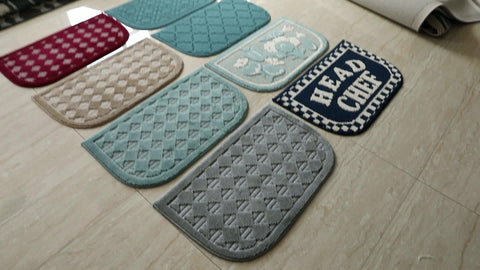
Polypropylene rugs, also known as olefin rugs, are popular in rug material for those seeking a budget-friendly and low-maintenance option without compromising style.
Pros:
- Polypropylene rugs are highly resistant to stains, making them ideal for homes with children or pets.
- They are durable and can withstand heavy foot traffic.
- They are fade-resistant, making them suitable for areas with direct sunlight exposure.
- Polypropylene rugs are moisture-resistant, making them suitable for bathrooms or outdoor spaces.
- Both cleaning and drying time are rapid.
Cons:
- Polypropylene rugs may not have the same luxurious feel as natural fibers like wool.
- They are more prone to flattening and may lack the bounce and resilience of wool rugs.
- High heat can cause polypropylene rugs to melt or become damaged.
Best Uses:
- Playrooms and basements: Polypropylene's stain resistance and durability make them perfect for these areas.
- Outdoor spaces: Their moisture resistance makes them suitable for patios and decks.
- Allergy-prone households: Polypropylene rugs are less likely to trap allergens than natural fibers.
Rug Material #4: Jute

Jute rugs are gaining popularity as eco-friendly and sustainable alternative rug material that add warmth and texture to various spaces.
Pros:
- Jute rugs are biodegradable and environmentally friendly.
- They have a natural, earthy texture that adds a rustic touch to any room.
- Jute fibers are soft, making them comfortable to walk on.
- Jute rugs are highly durable and long-lasting.
Cons:
- Jute rugs are unsuitable for high-moisture areas as they can lead to mold and mildew.
- They may be less resistant to stains compared to synthetic or wool rugs.
- Jute fibers can be rough and may cause discomfort for individuals with sensitive skin.
Best Uses:
- Living rooms and bedrooms: Jute rugs create a cozy and natural ambiance.
- Low-traffic areas: Their durability makes them suitable for areas with moderate foot traffic.
- Eco-conscious homes: Jute's sustainability appeals to those seeking environmentally friendly options.
Rug Material #5: Silk

Silk rugs epitomize elegance and luxury, known for their lustrous sheen and exquisite craftsmanship. While silk rugs require special care, they offer unparalleled beauty and sophistication.
Pros:
- Silk rugs have a luxurious feel and a stunning visual appeal, adding a touch of luxury to any room.
- They have excellent color retention, resulting in vibrant and long-lasting designs.
- Silk fibers are incredibly soft and smooth to the touch.
- These rugs exhibit a natural sheen that reflects light, creating a stunning effect.
- Silk is a hypoallergenic material, making it suitable for individuals with allergies or sensitivities.
Cons:
- Silk rugs are quite delicate and require gentle handling and specialized cleaning.
- They are unsuitable for high-traffic areas or homes with active children or pets.
- Silk rugs can be relatively expensive compared to other materials.
Best Uses:
- Formal living rooms and dining rooms: Silk rugs enhance the elegance and sophistication of these spaces.
- Low-traffic areas with minimal risk of spills or stains: These rugs are best enjoyed where they can be showcased and appreciated without enduring heavy use.
Rug Material #6: Sisal:

Sisal rugs are made from natural fibers derived from the agave plant. They offer a unique, organic texture and are well-suited for indoor and outdoor settings rug material.
Pros:
- Sisal rugs are incredibly durable and resistant to wear and tear, making them suitable for high-traffic areas.
- They naturally resist stains and can withstand frequent cleaning without losing their integrity.
- Sisal is a renewable and sustainable material, making it an eco-friendly choice.
- These rugs have a textured surface that adds visual interest and complements various decor styles.
Cons:
- Sisal rugs can be rough on bare feet and may not provide the same softness and comfort as other materials.
- They are susceptible to water damage and should be kept away from high humidity or moisture areas.
- Sisal fibers can be prone to discoloration when exposed to direct sunlight for prolonged periods.
Best Uses:
- Entryways and hallways: Sisal rugs can withstand heavy foot traffic and trap dirt effectively.
- Outdoor patios and decks: Their durability and resistance to the elements make them perfect for outdoor settings.
- Eco-conscious homes: Sisal's renewable and sustainable nature appeals to those seeking environmentally friendly options.
How to Pick the Right One?
Choosing the right rug material can greatly impact your rug's overall look, feel, and longevity. To make an informed decision, consider the following tips for choosing a rug for your space:
- Durability: Assess the level of foot traffic in the area where the rug will be placed. High-traffic areas require rug materials that can withstand frequent use and resist wear and tear. Materials like wool, polypropylene, and sisal are known for their durability.
- Comfort: Determine the level of softness and comfort you desire. Wool and silk rugs offer a luxurious and soft feel, while cotton rugs provide a gentle and cozy texture. Remember that some natural fiber rugs may be rougher on bare feet, so consider your comfort preferences.
- Maintenance: Evaluate your willingness and ability to maintain and clean the rug. Some materials, like wool and silk, may require professional cleaning to maintain their beauty, while others, such as cotton and polypropylene, are easier to clean and maintain on your own.
- Stain Resistance: Consider the likelihood of spills or stains in the area where the rug will be placed. If you have children or pets, stain resistance becomes crucial. Synthetic materials like polypropylene are highly resistant to stains, while wool and cotton may require more care and immediate attention to spills.
- Aesthetic Appeal: Think about the style and ambiance you want to create in your space. Each rug material offers a unique visual appeal. Wool rugs provide a classic and elegant look, while jute rugs add a rustic touch. Consider how the material's texture, sheen, and colors align with your interior design.
- Allergies and Sensitivities: Select hypoallergenic rug materials less prone to trap allergens if you or your family members have allergies or sensitivities. Wool and silk are examples of natural fibers that are considered to be hypoallergenic. At the same time, synthetic materials like polypropylene might be an excellent choice for those who are prone to allergies.
- Budget: Set a budget for your rug purchase and consider the price range of different rug materials. Wool and silk rugs are more expensive, while cotton and synthetic materials are often more budget-friendly.
You may choose the ideal rug material that fits your needs, tastes, and the particular specifications of your area by carefully considering these elements and balancing the benefits and drawbacks of each rug material. Remember that selecting the right rug material is crucial to establishing a cozy, long-lasting, and aesthetically pleasing atmosphere in your house.
Conclusion
In this comprehensive Rug Material Guide, we have explored six different rug materials: wool, cotton, polypropylene, jute, silk, and sisal. Each material offers distinct qualities and characteristics that cater to different preferences and needs.
Remember to prioritize your personal preferences and the specific requirements of your space to find the rug material that best suits your needs. Investing in the right rug material ensures that your rug not only adds beauty and warmth to your home but also stands the test of time. Happy rug hunting!
Frequently Asked Questions
What material is most preferred for rugs?
There is no doubt that wool has been one of the most preferred rug materials for centuries. However, wool is much more expensive now, so people are looking for some less expensive sources. However, as far as durability is concerned, wool rugs are best.
Are polypropylene rugs available in the market?
Yes! These rugs are easily available and can be obtained at a reasonable price. They’re the best rug to absorb water.
Which rugs are most durable?
Wool, being the most popular rug material, is durable as well. Propylene, jute, sisal, nylon, and seagrass are long-lasting materials - making the best rug material for the dining room.
Are wool and jute rugs soft?
Yes, jute and wool are naturally soft and shiny fibers. They are further made soft by soaking in water. Therefore, rugs made from these are soft and relaxing underfoot.
How can you tell if a rug is of good quality?
Yes, you can tell the quality of an area rug through its knots per square inch. These knots determine the rug pattern's density, durability, and clarity. Moreover, the more detailed the design of the back of the rug, the more quality rug it is.
What is a microfiber rug?
Microfiber rugs are synthetic types of rugs. These rug types are made from 100 percent polyester or other synthetic material with tiny threads to create a plush feel underfoot.
What is the difference between polypropylene and polyester rugs?
Both polyester and propylene are tough and stain-resistant materials. They offer considerable durability even after being synthetic fibers. However, propylene is more durable than polyester due to its non-porous nature. That’s why it is regarded as the best material for high-traffic rugs.
Can I wash a polypropylene rug?
Generally, propylene rugs are low maintenance. But you can wash it easily when the need arises. So, take it out on a sunny day, use a few drops of mild soap, and clean the rug using a brush.
Can you vacuum a jute rug?
Yes, you can vacuum a jute rug. But, it only needs to be once or twice a week depending on the foot traffic. Flip your jute rug every six months and vacuum it at least once a week.
Do wool rugs ever stop shedding?
Shedding of wool rugs is normal. But it should not last that long. Yes, it happens more often when you have just purchased the rug. But, it should stop or decline to shed after a few weeks or months. Naturally, wool settles down and stops shedding after some time.

